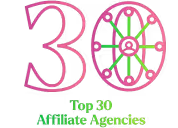
2020 Digital Advertising Trends for a Holiday Season Upended by COVID and the Election
Uncertain Footing Translates to Earlier Holiday Ads & Shopping
It all kicked off earlier this year. With the year’s uncertainty already having moved the paid marketing competitive environment into uncharted territory, we anticipated that consumers would begin their shopping earlier in the holiday season – in reaction to a landscape that has been deeply affected by the contentious election season and the ongoing disruption of the pandemic.
What did this mean for paid advertising holiday strategy?
Higher CPMs (cost per thousand impressions) than usual across all marketing channels, especially on paid social, from October through the end of November.
Brands that depend on Q4 revenue to buoy their year wouldn’t be able to meet this challenge with the same old paid marketing strategy. To put these brands in a better position to grab market share and keep costs under control, RBL looked to building larger retargeting pools earlier than usual, utilizing alternate ad platforms and more rigorous testing of ad creative.

Heated Competition for Customers as More Brands Invest in Facebook Ads
Early on in the pandemic, many brands took a conservative approach to digital ad spending, leaving those that stayed the course with more available ad inventory – and the significant benefits of increased brand awareness and market share on-the-cheap. Then as Spring headed into Summer, companies that had never really invested much in paid marketing online were moving to get their brands in front of consumers spending much more time in front of their devices as they sheltered at home. These strategic adaptations to a marketplace with much less face-to-face interaction have resulted in increasingly expensive competition for impressions that also ramped up faster and earlier than previous holiday seasons.
We saw CPM increases that were steeper and arrived earlier than expected for the holiday season – beginning in early September. Not only that, Amazon moved back Prime Day from mid-July to October 13th, inspiring big-box stores and other brands to move up Black Friday sales to better compete.
But with the ongoing economic uncertainty, made worse by delays in new stimulus checks and expiring unemployment benefits, we’re likely to see greater competition over fewer consumer dollars as the year ends. Brands have had to capture these dollars earlier, or risk a below-par holiday season, which for many brands, can mean a massive hit to their annual revenue.
RBL Front-Loaded Paid Marketing to Better Position Clients for Q4 Success
To confront the challenge of an earlier and more cutthroat level of competition for the 2020 holiday season, RBL has taken a three-pronged approach for clients:
1. Building retargeting pools earlier
RBL helped its clients build up retargeting pools a month ahead of schedule, in September. By front-loading paid marketing, especially with video advertising, RBL has been driving traffic to its clients’ websites, their videos and their ads – meaning greater brand awareness going into Q4.
2. Investing in alternative paid marketing channels
RBL made use of channels like Pinterest that can drive traffic, and eventually, conversions often at a lower cost than Facebook and Google. Ad traffic from less popular paid social marketing sites like Pinterest can lead to an increase in retargeting pools, and drive more conversions at a lower cost in what would otherwise be a very expensive pre-holiday period from a paid marketing perspective. Affiliate is another option here, but more of a longer-term solution for the right-sized companies at the right stage.
3. More aggressive testing of ad creative
Another effective way to control costs while still reaching customers is to increase the speed and frequency of ad creative testing. The learnings gained through testing at scale helps clients understand which components of the creative are resonating with audiences, making ads more cost effective with more efficient performance – from the top of the funnel all the way through to conversion.
Heading-1
Heading-2`
Heading-3
Heading-4
Heading-5
Heading-6
The rich text element allows you to create and format headings, paragraphs, blockquotes, images, and video all in one place instead of having to add and format them individually. Just double-click and easily create content.
Static and dynamic content editing
A rich text element can be used with static or dynamic content. For static content, just drop it into any page and begin editing. For dynamic content, add a rich text field to any collection and then connect a rich text element to that field in the settings panel. Voila!
How to customize formatting for each rich text
Headings, paragraphs, blockquotes, figures, images, and figure captions can all be styled after a class is added to the rich text element using the "When inside of" nested selector system.
Why it matters: As you devise your landing experiences, make sure you ask questions of your customers to drive better conversion. You can do this through:
- Unordered list item 1
- Unordered list item 2
- Unordered list item 3
- Unordered list item 4
- Ordered list item 1
- Ordered list item 2
- Ordered list item 3
- Ordered list item 4
That's it! 👊 we'll add some stuff in the weeks to come. Thanks for taking this journey with us and sharing your inbox with us!
[[—authors name] author]

Learn how RBL drove nearly 30k qualified leads via the cross-channel B2B Saas performance marketing strategy created for Hopin.

As Facebook/Instagram and its algorithm have advanced over the years, ad optimizations and targeting have become less and less important.

Learn why RBL recommends that brands move now to make Snapchat advertising a bigger part of their social media ad strategy.





.webp)

